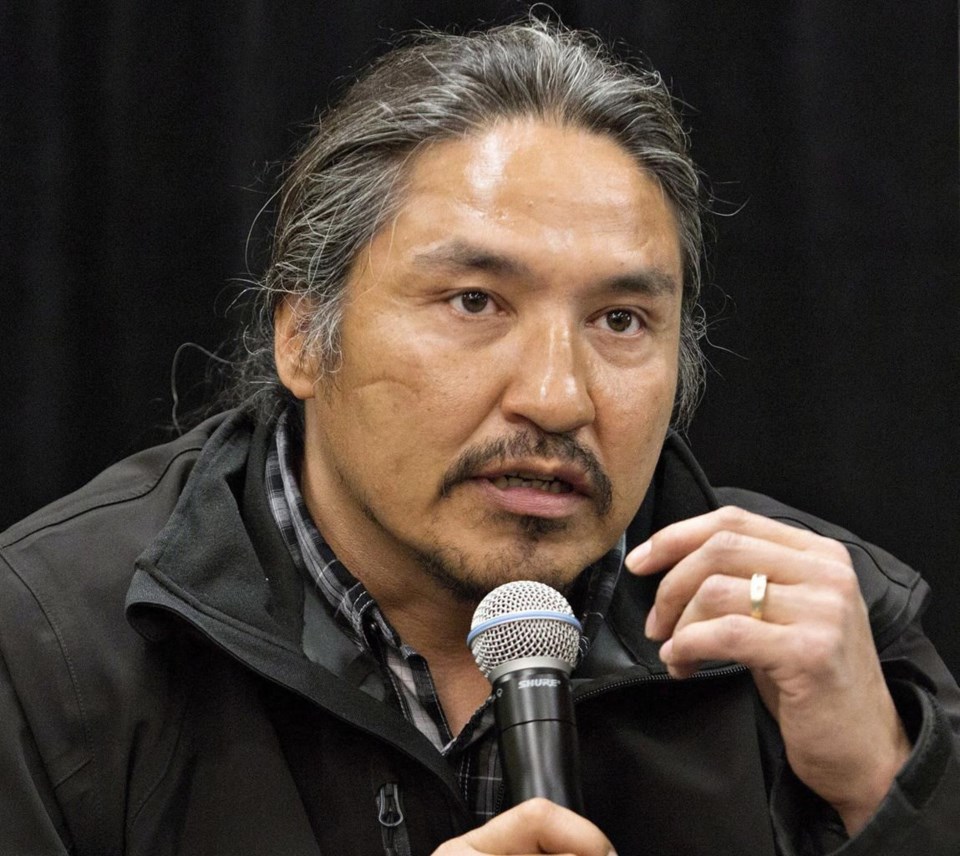EDMONTON — An Alberta First Nation has filed a sweeping lawsuit against the province's energy regulator and the government over releases from an oilsands mine, alleging the agency acted in bad faith and is set up in a way that violates the Constitution.
"The (Alberta Energy Regulator) has to change," Chief Allan Adam of the Athabasca Chipewyan First Nation said in an interview Wednesday.
The lawsuit stems from releases of process-affected water from Imperial Oil's Kearl mine north of Fort McMurray, Alta.Â
In May 2022, seepage on the site was reported to First Nations and communities as discoloured water pooling on the surface. They were not informed that the seepage contained toxic tailings until February 2023, when the regulator issued environmental protection orders against Imperial, and then only after 5.3 million litres of contaminated wastewater escaped from a holding pond.
Although the seepage was contained within the Kearl lease, tailings residue was detected in groundwater.Â
Meanwhile, band members continued to hunt, fish, gather plants and practice their treaty rights on adjacent land for nine months.
"It was a direct impact on our treaty rights," said Adam. "The AER is supposed to protect communities."
The lawsuit alleges the regulator's communications failings around the Kearl releases are systemic.
"The failings of the AER in relation to the Kearl facility are also symptomatic of deficiencies in the provincial regulatory system as a whole, including its lack of consultation or consideration for how cumulative impacts affect (the band's) Aboriginal and treaty rights," the statement of claim says.
"The acts and omissions of the AER were sufficiently unlawful, negligent and reckless that they amount to bad faith."Â
The lawsuit alleges Alberta's regulatory regime routinely fails to consider cumulative effects of multiple developments and explicitly prevents the regulator from considering First Nations constitutional issues.Â
"This regulatory regime infringes the rights of ACFN in its structure and operation, and is unconstitutional and must be declared so."
Allegations in the lawsuit have not been proven and no statements of defence have been filed.Â
A spokesperson with Alberta Environment and Protected Areas said the government had no comment.
"As this is a matter that will be before the courts, it would be inappropriate for the government to comment," Ryan Fournier said in an email.Â
Regulator spokesman Renato Gandia said the lawsuit has been received.
"The AER will be seeking legal advice," he said in an email.
Arm's-length, quasi-judicial agencies like Alberta's regulator have some legal immunity from civil lawsuits over policy decisions.
Kevin Hille, a lawyer for the band, said that immunity doesn't cover negligence or constitutional violations.
"You can't avoid civil liability when you act in a clearly negligent, reckless or bad faith way," he said. "You also can't rely on a statutory immunity clause when you act in a way that's unlawful or unconstitutional."Â
Hille said the lawsuit goes after the regulator not for approving the Kearl mine, but for how it has regulated the mine since. He said the record shows the regulator failed to appropriately deal with tailings seepage even though such seepage was predicted during the mine's approval hearings and data showed it was happening at least by 2021. Â
"The AER, as the day-to-day regulator of a ticking time bomb, ignored all the data that (the mine) was prone to seepage and was seeping," Hille said.Â
The lawsuit seeks punitive damages of $500 million. It also says at least part of the royalties — $50 million a month — that Alberta received between February 2022 and November 2023 should revert to the band.Â
But Adam said the point of the lawsuit is to pressure the province to change the way it deals with First Nations on resource projects.Â
"That's the whole point," he said. "The Alberta government has to make changes.
"Your little puppet, the AER that has been rubber-stamping all these industries, it's all in question."Â
This report by The Canadian Press was first published March 6, 2024.Â
Bob Weber, The Canadian Press




